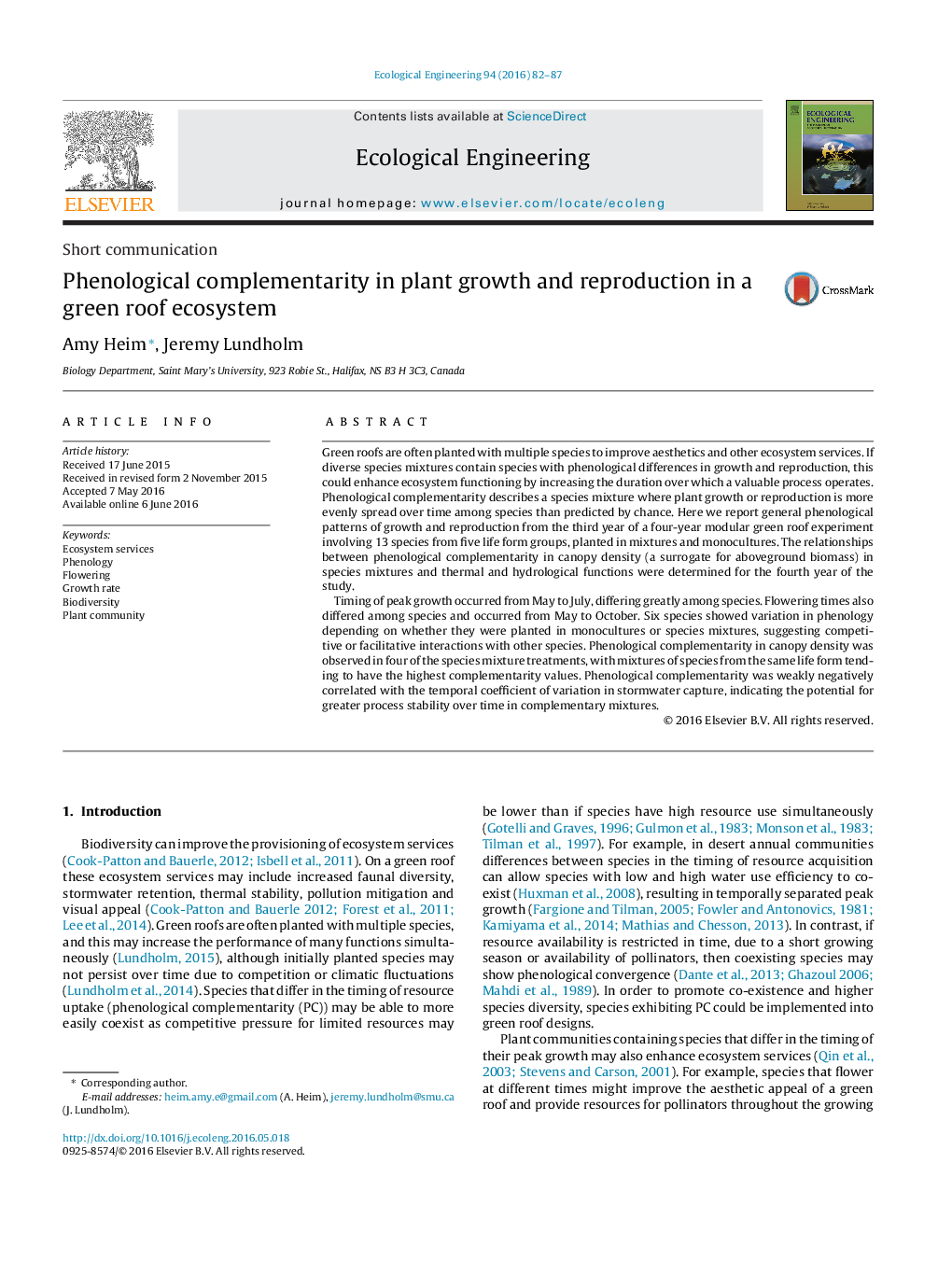| Article ID | Journal | Published Year | Pages | File Type |
|---|---|---|---|---|
| 4388534 | Ecological Engineering | 2016 | 6 Pages |
Green roofs are often planted with multiple species to improve aesthetics and other ecosystem services. If diverse species mixtures contain species with phenological differences in growth and reproduction, this could enhance ecosystem functioning by increasing the duration over which a valuable process operates. Phenological complementarity describes a species mixture where plant growth or reproduction is more evenly spread over time among species than predicted by chance. Here we report general phenological patterns of growth and reproduction from the third year of a four-year modular green roof experiment involving 13 species from five life form groups, planted in mixtures and monocultures. The relationships between phenological complementarity in canopy density (a surrogate for aboveground biomass) in species mixtures and thermal and hydrological functions were determined for the fourth year of the study.Timing of peak growth occurred from May to July, differing greatly among species. Flowering times also differed among species and occurred from May to October. Six species showed variation in phenology depending on whether they were planted in monocultures or species mixtures, suggesting competitive or facilitative interactions with other species. Phenological complementarity in canopy density was observed in four of the species mixture treatments, with mixtures of species from the same life form tending to have the highest complementarity values. Phenological complementarity was weakly negatively correlated with the temporal coefficient of variation in stormwater capture, indicating the potential for greater process stability over time in complementary mixtures.
